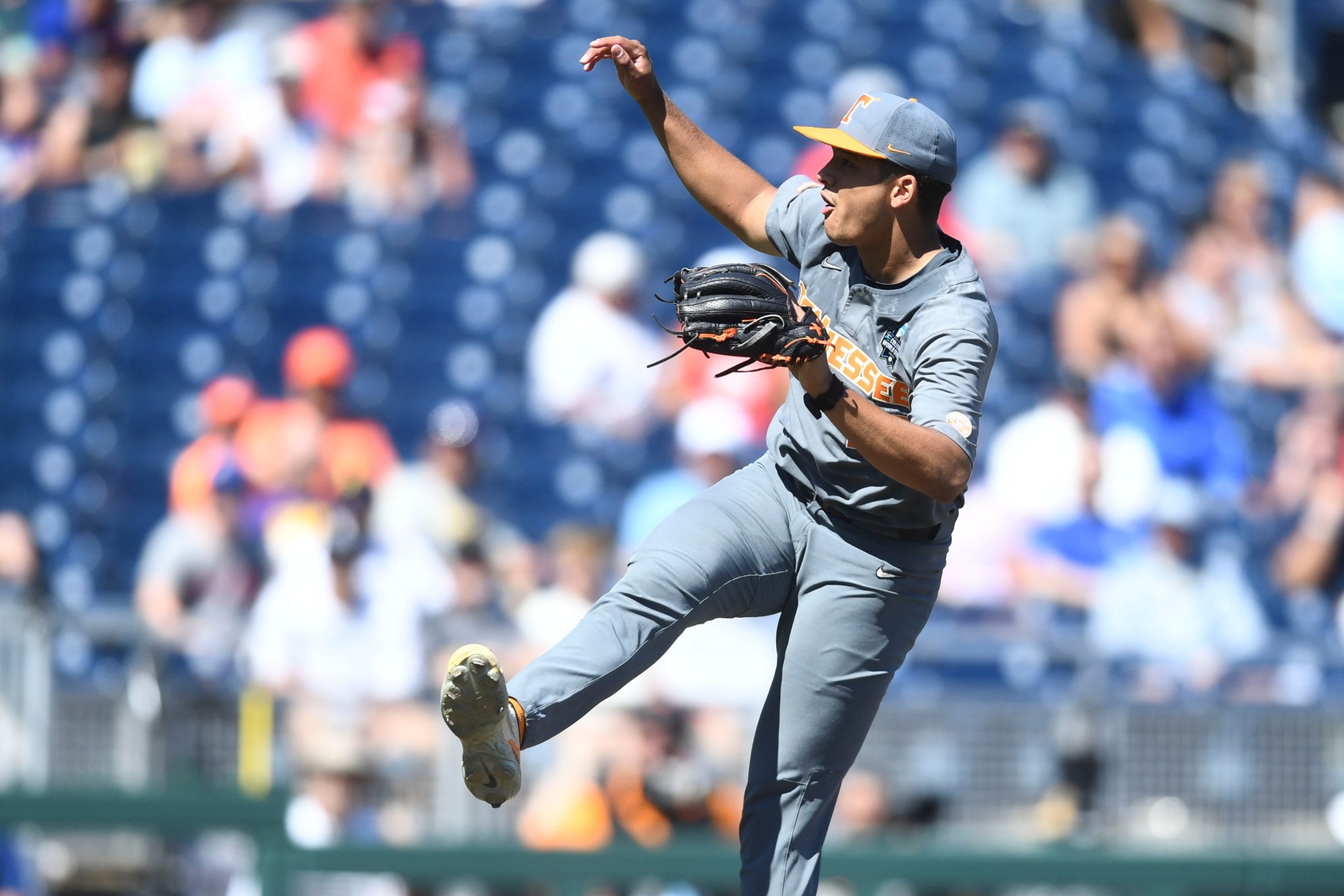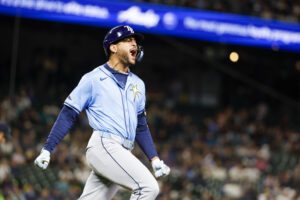Chase Burns has been on professional scouts’ radar for quite some time. After touching 100 MPH in high school, Perfect Game ranked the right-hander as the 17th-best high school prospect in the 2021 class. Burns was selected in the 20th round by the San Diego Padres but opted to play collegiately at Tennessee instead. He pitched for the Volunteers for two years before deciding to transfer to Wake Forest for the upcoming season. Burns will once again be draft-eligible in 2024 and is currently heralded as MLB Pipeline’s top draft prospect.
Chase Burns 2024 Draft Profile
Strengths
Burns’ greatest strength is his fastball. In a hybrid role between starter and reliever in 2023, he averaged 96 MPH with his fastball. He also features a plus slider that sits in the mid-80s with a good spin rate. Some scouts believe that there is room for Burns’ velocity to increase as he fills out his 6-foot-4 frame. Burns is also working on adding a curveball and splitter to his arsenal. As his stuff is already elite at just 20 years old, Burns’ ceiling is extremely high.
The combination of high velocity and spin rate translated to a tally of 217 strikeouts during Burns’ first two college seasons. In 2023 he ranked 19th in Division-1 with 114 punchouts, all while spending a portion of the year in the bullpen. Throwing 72 innings, Burns posted 14.3 strikeouts per nine innings.
Weaknesses
Burns gets into trouble when batters put the ball in play. Despite the impressive strikeout rate, Burns registered an ERA of 4.25 in 2023. Opponents hit just .222 against him but managed 32 extra-base hits, including 10 home runs. It is a puzzling development after Burns produced a 2.91 ERA in 2022. One potential explanation could be that hitters adjusted to Burns. Also, it could be due to a smaller sample size and the fact that college hitters use aluminum bats. Burns’ inflated ERA is not, however, the result of a lack of command. He filled up the strike zone well this year with a walk rate of only 2.8 per nine innings. Undoubtedly, Burns’ ability to induce weak contact in 2024 will be crucial for his draft stock.
MLB Player Comparison
Although Burns made 10 appearances out of the bullpen this year, he likely profiles as a starter in pro ball. Thus, one MLB player comparison is Hunter Greene of the Cincinnati Reds. Both right-handers are 6-foot-4 power pitchers who rely on strikeouts. Much like Burns, Greene primarily throws his fastball and slider. Greene throws slightly harder than Burns, averaging 98.6 and 88.2 MPH on his fastball and slider, respectively. However, as Burns continues to grow into his frame, he is capable of improving his velocity to a similar level. Greene’s 31.4% strikeout rate is fourth-best in MLB but Burns may have a small advantage in terms of command. Greene was a highly-touted prospect himself, going second overall to the Reds in 2017. All eyes will be on Burns to see if he can outdo Greene in next year’s draft.
Main photo credits:
Caitie McMekin/Knoxville News Sentinel / USA TODAY NETWORK
Players mentioned:






